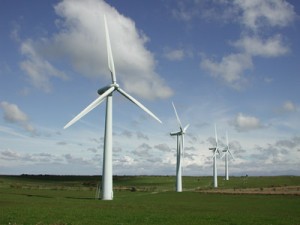 Renewable energy the way of the future
Renewable energy the way of the future
Alternative and renewable energy sources continue to be hot dicussion topics throughout the world. Both solar and wind power are renewable energy sources that continue to attract considerable attention.
Solar Power
 Located in Nevada, USA, construction of the largest solar thermal power plant to be built in the last 15 years, is nearly complete.
Located in Nevada, USA, construction of the largest solar thermal power plant to be built in the last 15 years, is nearly complete.
The 64 Megawatt Nevada Solar One power plant will generate enough power to meet the electricity needs of about 40,000 households and follows in the steps of the 354 Megawatt solar thermal power plants located in California’s Mojave Desert.
While California’s solar plants have generated billions of kilowatt hours of electricity during the past two decades, the Nevada Solar One plant will use new technologies to capture even more energy from the sun.
Wind Power
 At the end of 2006, the total installed wind power capacity throughout the world was 74,223 megawatts which accounts for less than 1% of world-wide electricity use. This generation figure is up from 59,091 MW in 2005.
At the end of 2006, the total installed wind power capacity throughout the world was 74,223 megawatts which accounts for less than 1% of world-wide electricity use. This generation figure is up from 59,091 MW in 2005.
The countries with the highest total installed capacity are Germany , Spain, USA, India and Denmark. These installations account for approximately 20% of electricity use in Denmark, 9% in Spain, and 7% in Germany.
Generally it can be difficult to site wind turbines in many areas for aesthetic or environmental reasons, and it is also often difficult to integrate wind power into existing electricity grids in some cases.
Notwithstanding these issues, the wind energy sector has become an important player in the energy market, with the total value of new generating equipment installed in 2006 reaching approximately US$23 billion.
It is expected that the 2007 analysis will show a continuing and substantial increase over previous years.

